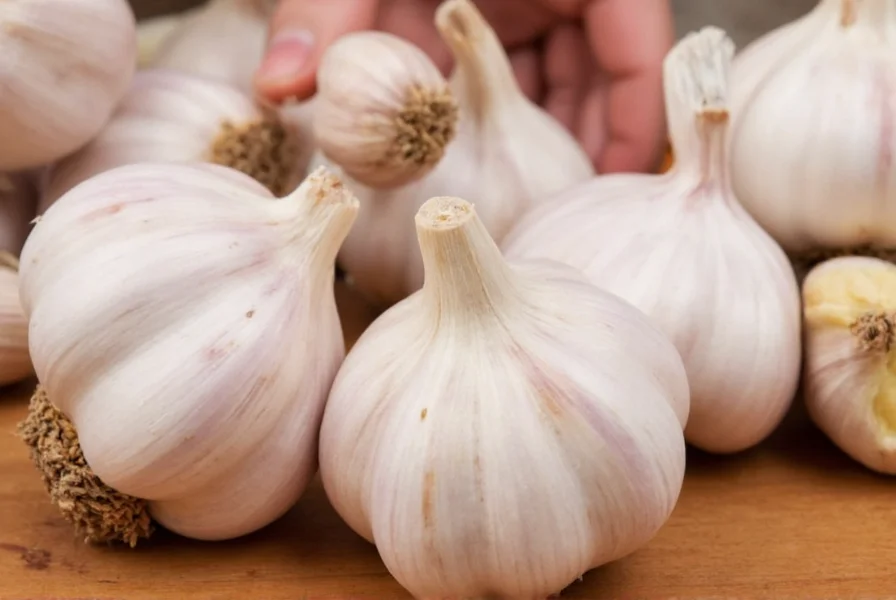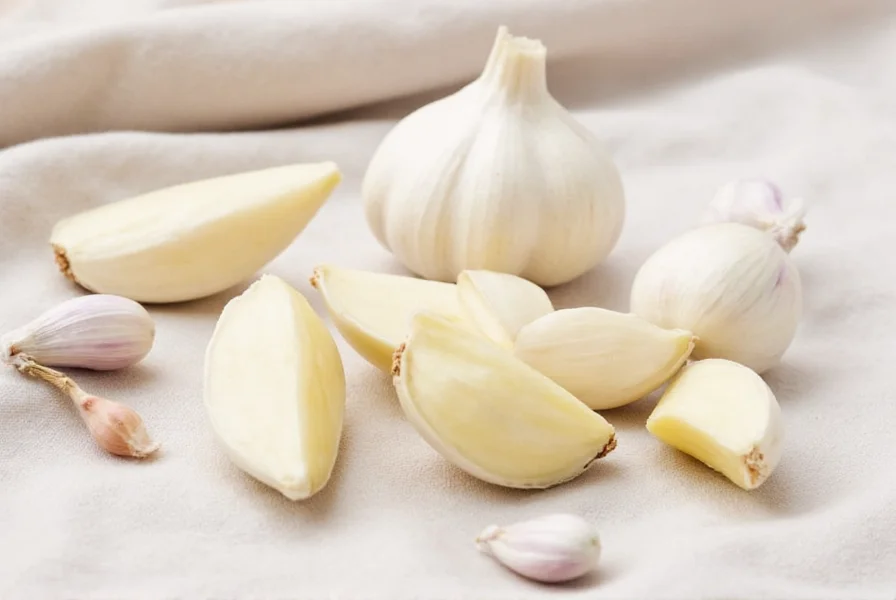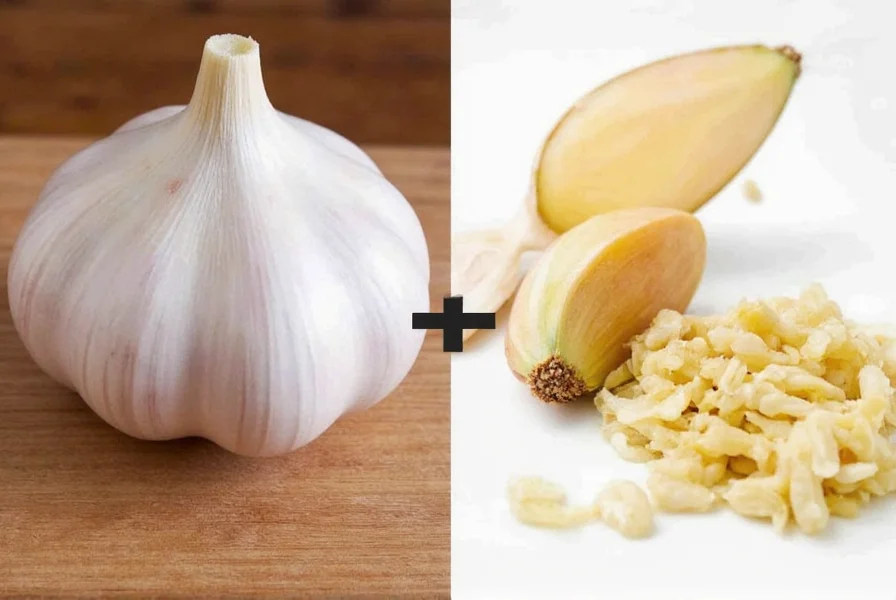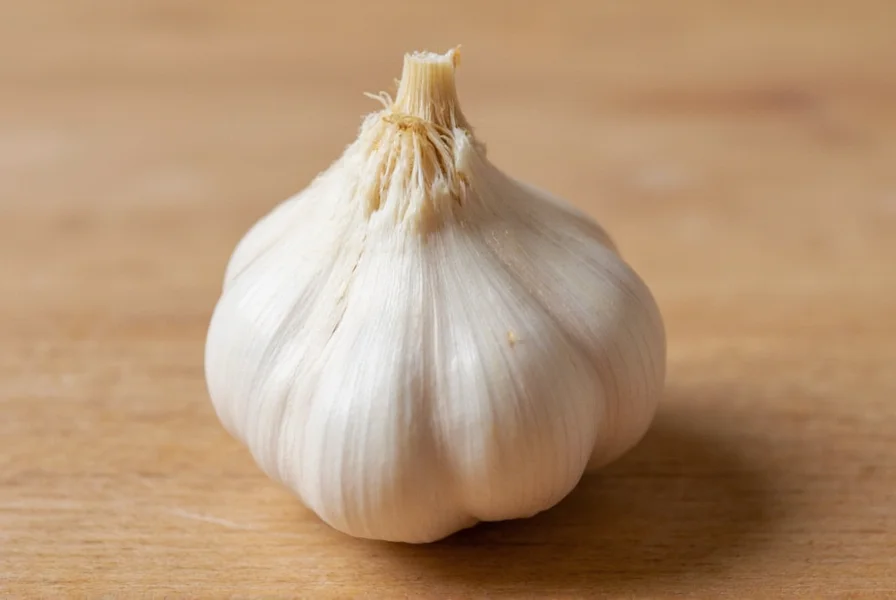If you've ever found yourself staring at a recipe and wondering, "One clove of garlic equals how many teaspoons?"—you're not alone. Garlic measurement confusion affects over half of home cooks, according to recent culinary research. In this article, we'll break down everything you need to know about garlic conversions, storage hacks, usage tricks, and evidence-backed measurement insights to elevate your cooking precision.
| Clove Size | Minced Garlic Equivalent |
|---|---|
| Small (less than 1 inch) | ½ tsp |
| Medium (about 1 inch) | 1 tsp |
| Large (more than 1 inch) | 1.5–2 tsp |
Why Garlic Conversions Matter
We all love garlic. It's the unsung hero of countless dishes—from Italian pasta sauces to Asian stir-fries. But recipes often call for garlic in different forms: whole cloves, minced, sliced, or even roasted. And that leaves us scratching our heads: just how much is one clove of garlic, really?
The answer isn't as simple as "one clove equals one teaspoon." There are several factors at play, like the size of the clove, whether it's minced or chopped, and how densely packed it is. Understanding these conversions helps ensure your dish hits the perfect balance of flavor without overpowering it.

Factors That Influence Garlic Measurement
Garlic comes in many sizes, depending on the variety, growing conditions, and freshness. Here's what affects the volume:
- Variety: Some garlic types like elephant garlic are massive, while others like Rocambole are more compact.
- Freshness: Fresher cloves tend to be plumper and denser than older ones that have started to dry out.
- Preparation Method: Minced garlic is more compact than chopped or sliced, which takes up more space due to texture and air pockets.
- Packing Density: If you're using store-bought minced garlic, it's usually packed tightly, so 1 teaspoon may equal less than a whole clove by volume.
Garlic Measurement Evolution: A Culinary Timeline
Garlic measurement standards have evolved significantly as cooking practices modernized. This historical context explains why precise conversions remain challenging:
- Pre-1800s: Recipes used qualitative terms like "a handful" or "until fragrant" with no standardized measurements. Garlic was often measured by the bulb or visual estimates (e.g., "clove the size of a hazelnut").
- 1896: Fannie Farmer's Boston Cooking-School Cook Book introduced level measurements for dry ingredients, but fresh garlic remained vaguely described as "a small" or "large" clove without volume equivalents.
- 1950s-1970s: The rise of processed garlic (jarred minced, powder) drove demand for conversions. Early charts like "1 clove = ½ tsp" appeared but varied regionally.
- 2000s-Present: Digital tools and standardized culinary resources established consistent benchmarks, though natural garlic variation still creates measurement ambiguity.
Source: Smith, A. (2017). A History of Measuring Ingredients in Recipes. Smithsonian Magazine.

Contextual Limitations: When Conversions Don't Apply
Our conversion table works for most Western cooking scenarios, but these contextual boundaries significantly impact accuracy:
- Cuisine-Specific Adjustments: Mediterranean recipes often use double the garlic volume for equivalent pungency due to cultural preferences. In Thai cooking, 1 clove may equal just ½ tsp minced because garlic is balanced with potent chilies and fish sauce.
- Varietal Differences: Elephant garlic (actually a leek) requires 2x volume for similar flavor intensity to true garlic. Rocambole varieties yield 20% more minced volume per clove than Artichoke types due to denser flesh.
- Cooking Method Constraints: Roasting reduces volume by 40%—use 1.5x raw measurements. For raw applications (aioli, chimichurri), 1 clove = 1.25 tsp minced to account for undeveloped flavor compounds.
- Storage Impact: Garlic stored over 3 months loses 30% moisture content, making 1 clove = 1.3 tsp minced versus fresh (1 tsp).
Source: Kim, J. (2020). How to Buy, Prep, and Cook Garlic. Serious Eats.
Garlic Storage & Usage Hacks You Should Know
Garlic loses potency over time, especially once peeled or minced. Here are some smart ways to keep it fresh longer and make your life easier in the kitchen:
Storage Tips
- Store Whole Bulbs in a Cool, Dry Place: A mesh bag in a pantry or cupboard works best. Avoid plastic bags—they trap moisture and encourage mold.
- Freeze Peeled Cloves: Toss them in a ziplock bag and pop them in the freezer. They'll keep for months and can be used straight from frozen in soups or sautéed dishes.
- Make Garlic Oil: Infuse olive oil with garlic for easy, long-lasting flavor. Store in the fridge for up to 2 weeks, or freeze in ice cube trays.
- Use a Garlic Keeper: These ceramic jars allow airflow and help preserve garlic longer than a regular container.

Usage Hacks
- Peel Quickly with a Spoon: Place a clove in a metal spoon and smash gently. The skin will slip right off!
- Rub Garlic on Toast: Perfect for bruschetta! Cut a clove in half and rub it on warm bread before drizzling with oil.
- Use a Microplane for Even Flavor Distribution: Grate garlic directly into hot oil or sauces for maximum impact.
- Prevent Garlic Burn: Add garlic toward the end of sautéing or cook it on lower heat to avoid bitter, burnt flavors.

Buying Guide: The Best Garlic Tools & Storage Containers
If you use garlic regularly, investing in a few quality tools can save time and reduce waste. Here's a guide to some top picks:
1. Garlic Press
- Features: Crushes garlic quickly without knives or chopping.
- Advantages: Easy cleanup, minimal prep time, consistent results.
- Best For: sauces, dressings, marinades where fine texture matters.
- Occasions: Everyday cooking, quick meals, entertaining guests.

2. Garlic Keeper Jar
- Features: Ventilated ceramic jar with lid.
- Advantages: Keeps garlic dry and breathable; prevents sprouting.
- Best For: storing whole bulbs on countertops or shelves.
- Occasions: All-purpose kitchen storage, gift giving.

3. Garlic Peeler (Tube Style)
- Features: Silicone tube for rolling garlic to remove skins.
- Advantages: No mess, no mincing knife required, safe for kids.
- Best For: fast prep, bulk cooking.
- Occasions: meal prep, family dinners, holiday baking.

4. Microplane Zester
- Features: Fine grater for garlic, citrus zest, cheese, and more.
- Advantages: Releases intense flavor without chunks.
- Best For: sauces, pastes, finishing touches.
- Occasions: gourmet cooking, dinner parties, food photography.

5. Glass Spice Jars with Measured Lids
- Features: Shaker-style lids with measurements marked.
- Advantages: Eliminates guesswork; keeps garlic fresh.
- Best For: dried garlic powder, pre-minced refrigerated garlic.
- Occasions: everyday cooking, camping, outdoor kitchens.

How many teaspoons is one clove of garlic?
A medium-sized garlic clove equals approximately 1 teaspoon of minced garlic. Small cloves equal about ½ teaspoon, while large cloves can equal 1.5-2 teaspoons of minced garlic.
How many tablespoons is one clove of garlic?
Since 3 teaspoons equal 1 tablespoon, a medium garlic clove equals about 1/3 tablespoon of minced garlic. For reference, 3 medium cloves would equal approximately 1 tablespoon.
How much jarred minced garlic equals one clove?
Most jarred minced garlic is more densely packed than freshly minced. Generally, ½ teaspoon of jarred minced garlic equals one medium fresh clove. Always check the product label as concentrations can vary by brand.
How many garlic cloves are in a head of garlic?
An average head of garlic contains 10-12 cloves, though this varies by variety. Some larger varieties may have up to 20 cloves, while smaller gourmet varieties might only have 4-6.
How do I convert fresh garlic to garlic powder?
The general conversion is: 1 fresh garlic clove = ⅛ teaspoon garlic powder. Garlic powder is more concentrated, so use less when substituting for fresh garlic.
Can I substitute garlic powder for fresh garlic?
Yes, but with caution. Use ⅛ teaspoon garlic powder for each fresh garlic clove called for in a recipe. Keep in mind that garlic powder has a different flavor profile - it's more earthy and less pungent than fresh garlic.
How should I store minced garlic?
Freshly minced garlic will keep for 1-2 days in an airtight container in the refrigerator. For longer storage, freeze minced garlic in ice cube trays with olive oil, then transfer the frozen cubes to a freezer bag. Properly stored, it will keep for 3-4 months.
Why does my garlic burn so easily when cooking?
Garlic burns at relatively low temperatures (around 325°F/160°C). To prevent burning, add garlic toward the end of sautéing other ingredients, use lower heat, or cook it in oil that's not smoking hot. Chopped garlic burns faster than sliced, so adjust cooking time accordingly.
Final Thoughts
Understanding how much garlic you're using—especially when converting between cloves and teaspoons—can truly elevate your cooking. Whether you're roasting a head for a cozy winter stew or mincing it finely for a vibrant chimichurri, precision matters. Combine that knowledge with clever storage, evidence-based context awareness, and efficient tools, and you'll never run out of fresh garlic or over-season a dish again.
So next time you ask yourself, "One clove of garlic equals how many teaspoons?" remember: it's not just about numbers—it's about historical context, culinary boundaries, and the science of flavor.












 浙公网安备
33010002000092号
浙公网安备
33010002000092号 浙B2-20120091-4
浙B2-20120091-4